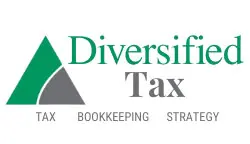How to Determine the Right Number of Allowances for Your Taxes
How to Determine the Right Number of Allowances for Your Taxes
As the tax season approaches, it’s important to understand how to optimize your tax withholding to ensure you’re not overpaying or underpaying the IRS. In the past, one of the key factors in determining the size of your paycheck was the number of allowances you claimed on your W-4 form.
However, with recent changes, allowances are no longer a factor. In this article, we will explore the new rules and strategies for determining the right number of allowances for your taxes.
Understanding Tax Withholding
Before we dive into the details, let’s take a moment to understand how tax withholding works. When you receive your paycheck, your employer withholds a certain amount of money to cover your federal income taxes. This withholding is done throughout the year, ensuring that you’re paying your taxes gradually rather than in one lump sum during tax season. It’s important to note that some states and municipalities also require tax withholding.
The amount your employer withholds depends on various factors, including your income and the information you provide on your W-4 form. In the past, claiming allowances played a significant role in determining your tax withholding. The more allowances you claimed, the less tax was withheld from your paycheck. Conversely, claiming fewer allowances meant more tax was withheld.
The Elimination of Tax Allowances
Effective from 2020, the allowances section of the W-4 form has been eliminated, simplifying the process of filling out the form. This change means that you no longer have to determine the number of allowances you’re eligible for. However, this doesn’t mean that you have no control over your tax withholding.
New Factors Affecting Withholding
While the elimination of allowances may seem daunting, there are still several factors that affect your tax withholding. Let’s explore these factors and how you can adjust them to optimize your withholding:
1. Multiple Jobs or Working Spouse
If you have multiple jobs or your spouse also works, it’s important to accurately report the total income from all sources on the W-4 form. This ensures that the IRS has an accurate record of your total earnings, which in turn affects your tax withholding.
2. Dependents
The number of dependents you claim on your W-4 form also plays a significant role in determining your tax withholding. It’s crucial to accurately report the number of dependents you have to ensure the correct amount of tax is withheld from your paycheck.
3. Other Income and Deductions
The W-4 form provides a section where you can list other income and deductions. This information helps to reduce your tax withholding. It’s essential to utilize this section to its fullest extent by accurately reporting any other sources of income and eligible deductions.
4. Extra Withholding
The W-4 form also provides an extra withholding section. This allows you to specify an additional amount that you want to be withheld from each paycheck. Adjusting this section can help you achieve a more precise tax withholding amount.
Working with a Financial Advisor
If you have a complex tax situation or need assistance optimizing your tax withholding, it’s advisable to work with a financial advisor who specializes in tax issues. A knowledgeable advisor can help you navigate the complexities of the tax code and develop a strategy that maximizes your financial well-being.
Claiming an Exemption from Withholding
Under certain circumstances, you may be eligible to claim an exemption from withholding. If you received a refund for all of the federal income tax withheld in the previous year and expect the same to happen this year, you can claim an exemption from withholding. However, there are specific criteria that must be met, such as not being claimed as a dependent and having income below certain thresholds.
It’s important to note that claiming exemption from withholding only applies to federal income tax. You’re still required to pay FICA taxes for Social Security and Medicare.
Fine-Tuning Your Withholding
While the elimination of allowances may seem limiting, there are still ways to fine-tune your tax withholding. Here are some strategies to consider:
1. Estimating Deductions and Withholding
You have the flexibility to estimate your deductions and withholding to achieve your desired tax withholding amount. However, it’s essential to ensure that your estimates are accurate to avoid underpaying or overpaying your taxes.
2. Updating Your W-4
You can submit a new W-4 form to your employer at any time during the year. This allows you to adjust the number of deductions or withholdings, which can directly impact the size of your paychecks.
Conclusion
While the elimination of allowances may have simplified the W-4 form, it hasn’t removed your ability to optimize your tax withholding. By understanding the new factors that affect your withholding and employing strategies to fine-tune your withholding, you can ensure that you’re not overpaying or underpaying your taxes. Whether you choose to work with a financial advisor or navigate the process independently, taking control of your tax withholding can help you achieve your financial goals.




